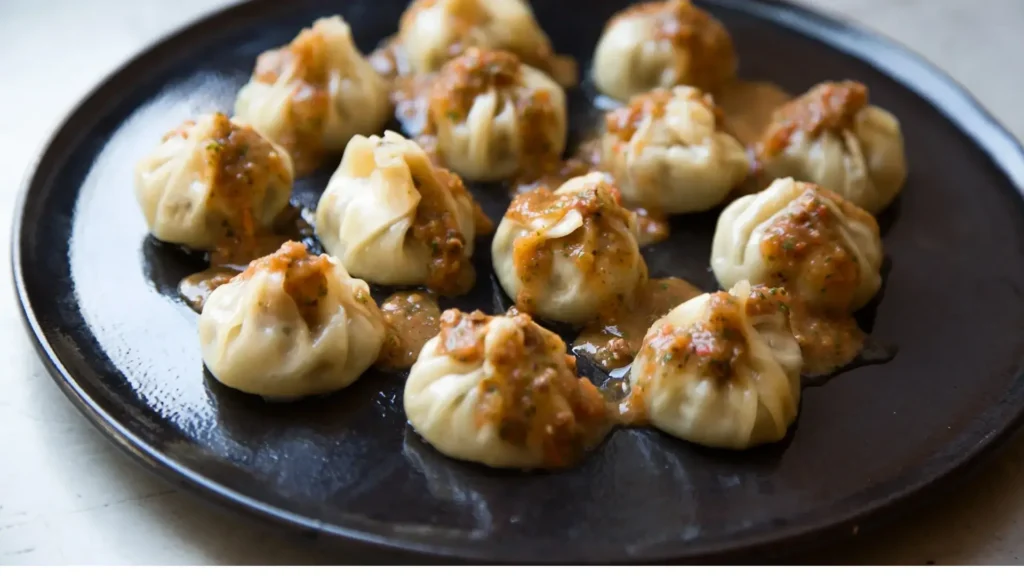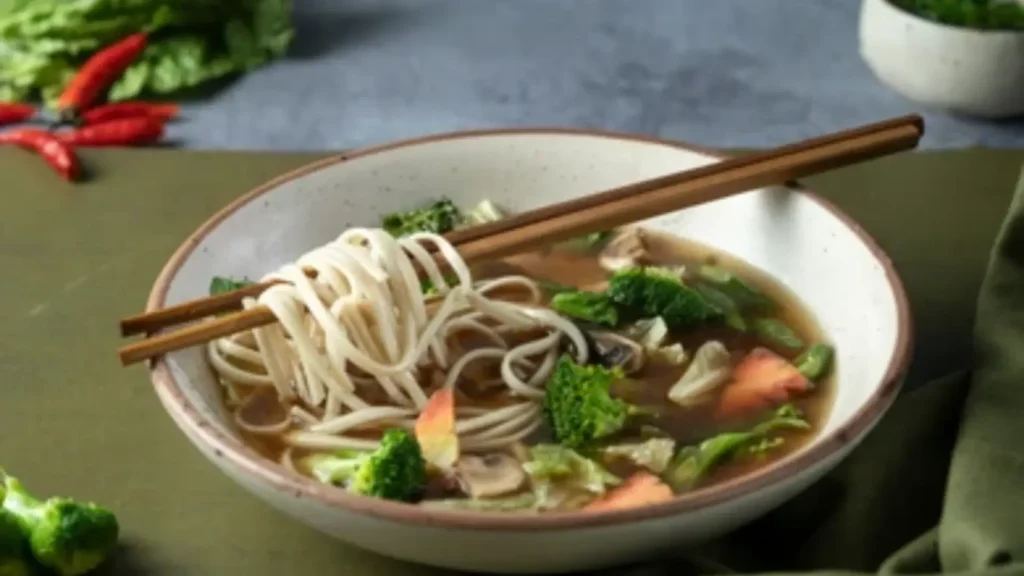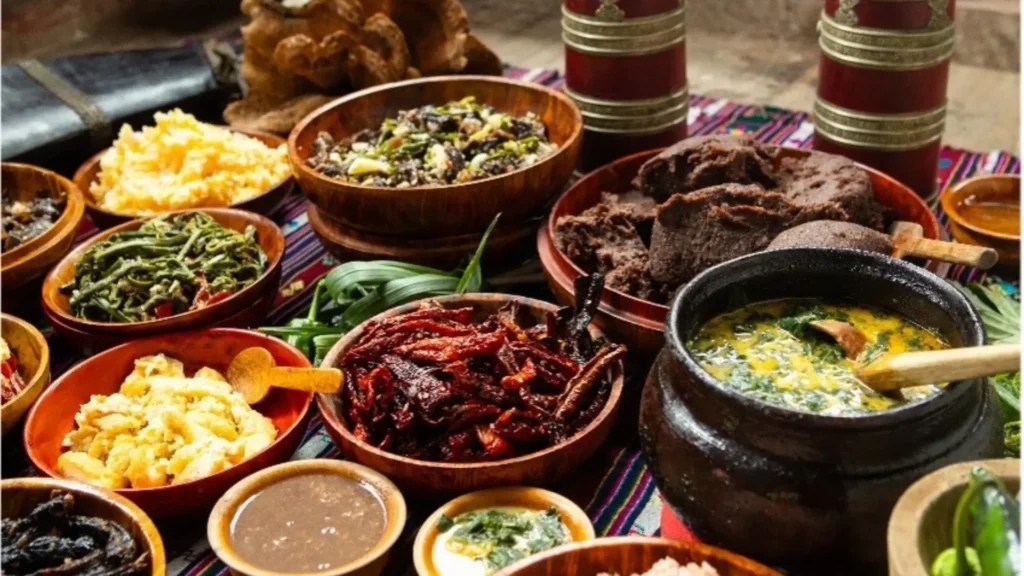
Certainly, there’s no denying the stunning beauty the Himalayas offer with their snow-covered mountains and pristine air, but there is another hidden gem of the region, which is delectable food. Himalayan delicacies are intricately woven into the rich history and diverse cultural traditions of the people, their day-to-day activities, and the fabric of their communities. It exhibits multifaceted food artistry that is sculpted with history, geography, and diverse community spirit.
This complete guide looks at the people that birthed Himalayan food, the special ingredients, the inspirational tales behind the dishes, the evolution of food artistry, and the region’s evolution which all serve the food. And of course, the food which is jaw-droppingly delicious without a doubt. This guide is perfect for travel lovers, food lovers, and anyone looking to spark their taste buds. Grab your fork, and join me on this delicious trip through the mountains.
Table of Contents
Where the Himalayan Food Culture Comes From
The Himalayan region is vast, stretching across countries like Nepal, Bhutan, India, China (Tibet), and Pakistan. Each area has its own food traditions, influenced by climate, resources, and cultural exchanges. In high-altitude areas, life is slow and simple, and food reflects this pace. Ingredients are usually local and seasonal, meaning fresh vegetables, lentils, grains, and meats dominate the menu.
Because the Himalayas have been a meeting point for traders, pilgrims, and travelers for centuries, the food here blends flavors from Central Asia, South Asia, and even the Middle East. This makes Himalayan cuisine not only unique but also incredibly diverse.
Read More about: Himalayan Salt History
The Influence of Geography on Taste
The food in the Himalayan region is influenced by the geography. Because parts of the region are cold, food is prepared in a way to provide life-saving warmth and energy. For this reason, rich soups, stews, and even dumplings are staples in the diet.
Herbs, fruits, and vegetables, on the other hand, are more common in the middle altitude valleys region which has a moderately warm climate. The soil in the region is also rich, thus, supporting the production of tasty organic crops. Nature also greatly influences what will be on the table, from the handpicked wild spices from Nepal to the dried wild herbs from Bhutan and even the spices grown on terraced filed in Nepal.
Everyday Staples in Himalayan Food
While each country and community has its own specialties, there are some everyday staples you’ll often find in Himalayan households:
1. Rice and Lentils
A classic combination in many Himalayan homes, especially in Nepal and northern India, is rice with lentil soup, known locally as dal bhat. It’s nutritious, filling, and easy to prepare.
2. Barley and Buckwheat
In higher altitudes where rice can’t grow well, barley and buckwheat are the main grains. These are often made into breads, pancakes, or porridge.
3. Vegetable Stews
Due to limited availability of meat in some areas, vegetable-based dishes are common. Seasonal vegetables are slow-cooked with mild spices for a comforting flavor.
4. Meat Dishes
In colder regions, yak meat, goat, and mutton are popular. Meat is often dried or smoked to preserve it for winter.
Signature Himalayan Dishes You Should Know
The Himalayas are home to some iconic dishes that have gained popularity worldwide.
Momo

A type of dumpling filled with vegetables or meat, often served with a spicy dipping sauce. Momos are a beloved snack in Nepal, Tibet, and Bhutan.
Thukpa

A warm noodle soup that’s perfect for cold weather. It usually contains vegetables, meat, and a flavorful broth.
Gundruk
A fermented leafy green vegetable dish from Nepal, known for its tangy taste and health benefits.
Tsampa
A roasted barley flour eaten in Tibet, often mixed with butter tea for a high-energy snack.
Chhurpi
A traditional Himalayan cheese made from yak or cow milk, available in soft and hard varieties. The hard version is famously chewy and can last for months.
The Role of Spices and Flavors
Unlike heavily spiced South Asian food, Himalayan cuisine uses spices in moderation. The focus is on enhancing the natural taste of ingredients rather than overpowering them.
Commonly used spices and herbs include:
- Turmeric
- Ginger
- Garlic
- Sichuan pepper
- Fenugreek
- Mustard seeds
- Coriander leaves
Fresh herbs like mint and cilantro add brightness to dishes, while chili peppers bring a gentle heat, especially in Nepalese food.
Read About: Differences Between Salt and Spices
Festivals and Food
In the Himalayas, food plays a central role in festivals and celebrations.
- Losar (Tibetan New Year) – Families prepare special dishes like khapsay (fried pastries) and butter tea.
- Tihar (Festival of Lights in Nepal) – Sweet and savory snacks are shared with guests.
- Dashain (Nepal) – A time for large family feasts with meat curries and rice.
- Bhutanese New Year (Losar) – Traditional dishes like ema datshi (chili and cheese stew) are enjoyed.
These events are more than just about eating; they bring communities together, strengthening social bonds.
How Himalayan Food Supports Health

Himalayan food is naturally healthy because it relies on fresh, seasonal, and mostly organic ingredients. The cooking methods: steaming, boiling, fermenting help preserve nutrients.
Some health benefits of Himalayan food include:
- High fiber from whole grains and vegetables
- Natural probiotics from fermented foods like gundruk and chhurpi
- Low oil content compared to many other cuisines
- Balanced nutrition with a mix of carbs, protein, and vitamins
This makes it ideal for people who want both flavor and well-being in their diet.
You Might Like: Health Benefits Of Himalayan Pink Salt
Modern Influence and Global Popularity
Himalayan cuisine has recently become more accessible with the introduction of regional dishes like momos and thukpa in restaurants across London, New York, and Sydney. Aside from the exotic appeal, the expanding inclination towards organic food and healthy eating has been pivotal in promoting region-specific dishes.
Equally important is the blend of new and old methods of cooking. While the pre-modernists cling to the traditional methods, the modernists appreciate the blend of innovation since it increases chances of the cuisine being sustained for the generations to come.
Cooking Himalayan Food at Home
The good news is, you don’t have to travel to the mountains to enjoy Himalayan food. Many dishes can be recreated at home with a few basic ingredients.
For example, to make vegetable momos, all you need is flour, cabbage, carrots, onions, and some mild spices. Steaming them gives the authentic taste and texture. Similarly, thukpa can be made with store-bought noodles, broth, and fresh vegetables.
Our friends at Sobaan Salts also recommend using natural Himalayan salt in your recipes. It not only adds flavor but also carries trace minerals for extra health benefits.
Read More: Types Of Salt For Cooking
Sustainability in Himalayan Food Culture
Another remarkable feature of Himalayan cuisine is its focus on sustainability. Because resources are limited in many areas, waste is minimal. Leftovers are often reused in soups or stir-fries, and most households rely on locally grown produce instead of importing food from far away.
This approach is not just eco-friendly but also ensures the food remains deeply tied to the land and its traditions.
The Emotional Connection with Food
For residents of the Himalayas, food transcends as just substance; it is a source of comfort, identity, and a pillar of community. Meals are crafted and shared as a family with cultures and traditions being cherished and honored. Children observe their elders in the kitchen, learning the painstaking patience needed for the love-filled art in every step.
Recently, home-baked bread and warm tea has been offered to travelers and tourists as in the past. These seemingly simple dishes continue to be a major element of their culture.
Why You Should Try Himalayan Food
If you’ve never tasted Himalayan food before, you’re missing out on a culinary experience that’s both simple and deeply satisfying. Whether it’s the chewiness of chhurpi, the spice kick of ema datshi, or the heartiness of thukpa, there’s something for every palate.
It’s not just about taste, it’s about experiencing a piece of the Himalayas from your plate.
Learn about: How To Use Salt For Food Preservation
Final Thoughts
Himalayan food is a perfect example of how geography, culture, and tradition blend to create something timeless. It’s healthy without being boring, flavorful without being overwhelming, and always made with care.
Whether you’re visiting the mountains or cooking at home, exploring Himalayan food is like opening a window to a world where meals are more than just food; they’re stories, memories, and a way of life.
And if you want to bring an authentic touch to your own cooking, try adding a pinch of natural Himalayan salt from Sobaan Salts, a small detail that connects your kitchen to the mountains themselves.
In Nepal’s Himalayan region, over 70% of households depend on subsistence farming, with traditional crops like millet, buckwheat, and barley forming the backbone of local diets. Fermented foods like gundruk (leafy greens) and kinema (soybeans) are consumed by 90% of rural communities as staple nutrition sources.(Source:United Nations Development Programme (UNDP) Nepal)
References:
- UNDP Nepal
https://www.np.undp.org - ICIMOD (International Centre for Integrated Mountain Development)
https://www.icimod.org - Google Trends
https://trends.google.com
Share This Post
Article By

